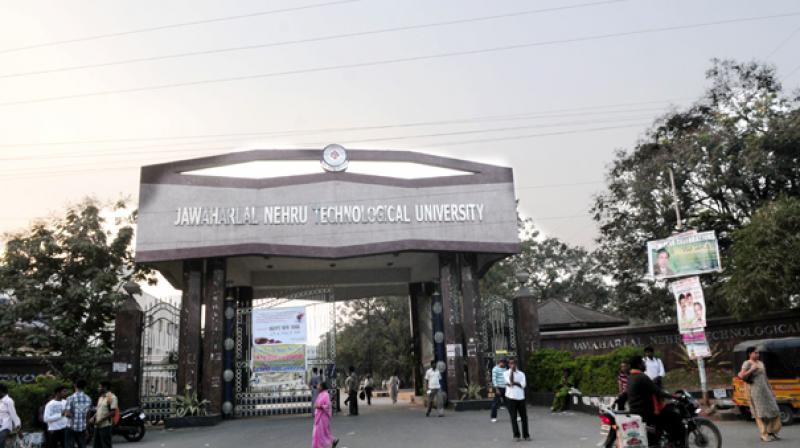JNTU-H water harvesting saving lakhs each year
The project was implemented with the objective of promoting demonstrative rainwater harvesting practices in urban areas.

HYDERABAD: Thanks to extensive rainwater harvesting measurues, the Jawaharlal Nehru Technological University, Hyderabad campus (JNTU-H) is ready to face the summer. A successful rainwater harvesting project has been taken up by JNTUH under technical guidance from the Central Ground Water Board (CGWB). The project was implemented with the objective of promoting demonstrative rainwater harvesting practices in urban areas and it has had a considerable impact on ground water levels. Data revealed that the piezometric heads in the wells within the vicinity of the artificial recharge structures have stabilised, when compared to pre-project data despite low rainfall in the post-project period.
Before the construction of rainwater harvesting structures in the campus, many of its bore wells had gone dry or were functioning with reduced yields. In the face of acute shortage of water, university authorities used to purchase water through tankers to meet the requirement during summers and used to receive 30 tankers per day. But the rainwater harvesting structures have brought in an improvement. University authorities have now stopped purchasing water in tankers and save nearly Rs 8,10,000 per year.
Project data also reveals that the average pre-monsoon water levels in pre-project period are 33.76 m, despite the fact that rainfall was normal or surplus. Meanwhile, despite deficit rainfall in post-project period, the average pre-monsoon water level remained at 32.1 m. Dr M.V.S.S. Giridhar, Head-Centre for Water Resources, Jawaharlal Nehru Technological University Hyderabad said: “The project area covers an aerial extent of 89.19 acres, with a built-up area of 12.1 acres and an open area of 77.09 acres. The average annual normal rainfall of the area is 821mm. Ground water development is mainly through bore wells going to a maximum depth of 250 m’’.
He added: “The water levels are deep ranging, from 30.4 to 35.8 m below ground level during pre monsoon and 6.7 to 24.0 m below ground level during post monsoon periods before the implementation of the project but after the project, pre-monsoon water level remained at 32.1 m. Now it can be seen from the data that water levels started stabilizing as seen from relatively shallower levels due to the impounding recharge by the harvesting structures.”

